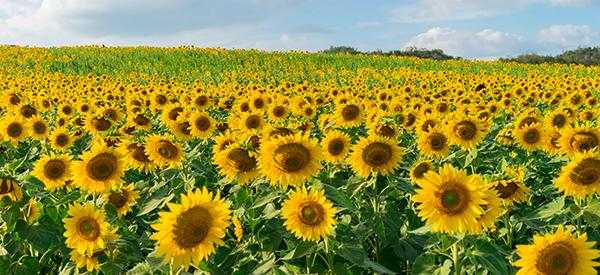
Sunflower
Sunflower (Helianthus annuus) is a commonly grown ornamental plant bearing a beautiful flower head that resembles the sun. It is a worldwide crop considered not just for its ornamental value, but also for its economic importance. All parts of the sunflower plant are equally important and hold valuable contributions to medicine and health.
Sunflower seeds are great for snacks or roasted as coffee. It is also ground into flour and sometimes used as a substitute for peanut butter for culinary use. Sunflower serves as a symbol of The Vegan Society because it has many health attributes. It is also the floral emblem of Kansas or the “Sunflower State,” representing happiness, faith, good luck, healing, and longevity among its people.
Sunflowers had religious and cultural prominence among northern Native Americans about 3000 years ago. It was considered the symbol of sun deities and was historically used as medicine and a food source. Through European exploration, the popularity of sunflowers spread throughout the world. Aside from Kansas, Ukraine, New Mexico, Spain, Arizona, and Kitakyushu City in Japan use sunflowers as representative signs.
Where Sunflower Is Found
Sunflower is a popular plant you can find almost everywhere. It is often cultivated for attraction in many gardens, making it a prominent horticultural crop. Some countries grow sunflower for its oil as a cheaper alternative for olive. Russia, Ukraine, Argentina, Romania, and Turkey are among the top producers and importers of sunflower worldwide.
⇒ The Complete Map of Edible Plants: Find Out What You Have in Your Area! (Video)
How To Identify Sunflower
Sunflowers can grow everywhere and are easily identifiable by their bright and sun-like flowers. But, hybridization causes the emergence of different colored sunflowers like red, bronze, mahogany, or white in different cultivars. The sunflower is heliotropic, which means the flower turns its direction to where the sun is.
Leaves. The sunflower’s leaves are green and rough with the presence of tiny hairs. They are lance-shaped with margins and are about 6 inches long and 3 inches wide. These leaves are arranged alternately on the stem but often opposite on its lower stalk.
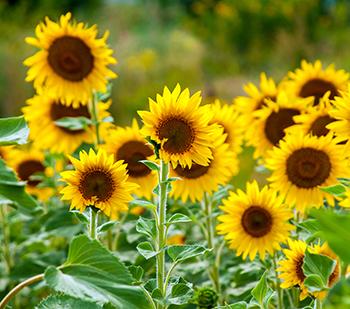 Flowers. The flower head of the sunflower is composed of a tubular dark chocolate disk center and yellow to orange ray florets. They are large, often more than 6 inches in diameter. The rays are arranged in radial symmetry around the disk.
Flowers. The flower head of the sunflower is composed of a tubular dark chocolate disk center and yellow to orange ray florets. They are large, often more than 6 inches in diameter. The rays are arranged in radial symmetry around the disk.
Fruits and Seeds. Sunflowers have achene fruits. They have a dry fruit that does not open when ripe. They developed from the flower heads and each fruit contains about 2,000 seeds. The seeds are ovoid to flattened, dark gray, and with white stripes.
Roots. Sunflowers have a strong taproot system. A single taproot can grow up to 3 feet deep. It also has secondary roots, which are fibrous and hairy-looking, growing out from the taproot.
Stem. The stem of the sunflower is sturdy, erect, coarse, hairy, and fleshy. They can grow to a towering height of about 10 feet (3 m). Common sunflowers have a single stem and do not form branches, but some cultivars do branch out.
⇒ Plant Identification Guide – 400 Wild Plants That You Can Forage For (Video)
Helianthus annuus, or common sunflower, is a member of the Asteraceae family. The plants thrive in the wild, but they are easily hybridized with other species. Most of the varieties sold today are hybrids of the wild and cultivated species.
Hybridization of sunflower is intended for increasing its oil content and its strength. It also aims to enhance its ornamental value. Thus, they come in a multitude of colors apart from the perceived bright yellow bloom that the common sunflowers grow.
Presently, sunflowers are available as:
- The traditional and towering variety
- Dwarf sunflower variety
- Colorful sunflowers
- Sunflowers for livestock, bird, and animal feeds
How To Grow Sunflower
Sunflower is fairly easy to grow, and it propagates through its seeds or cuttings. Growing it from seeds is the most common way, and they are readily available in many online seed stores.
Sunflowers look best when planted on a sunny border. The plant is a larval host, and its flowers will attract bees, butterflies, and birds. Some tall varieties of the plant may need to be staked to support its growth.
Growing Sunflower from Seeds
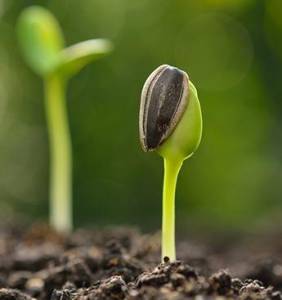 Starting the sunflowers in mid-spring will ensure bountiful blooms at the end of summer. But depending on the variety, some sunflowers may bloom earlier so that one can enjoy their glamourous and cheerful flowers throughout summer.
Starting the sunflowers in mid-spring will ensure bountiful blooms at the end of summer. But depending on the variety, some sunflowers may bloom earlier so that one can enjoy their glamourous and cheerful flowers throughout summer.
You can directly sow the seeds in the garden or start them in potting trays. If you are starting them in trays, sow the sunflower seeds in a pot with good drainage and a rich potting mix. Place the seeds two to three inches apart and cover them with an inch of the same potting mix. Firmly tamp the soil for good soil and seed contact and water them.
Place the pot in a sunny spot and keep it moist until the seeds germinate for a week or two. Transplant the seedling in their final location when they are five to six inches tall.
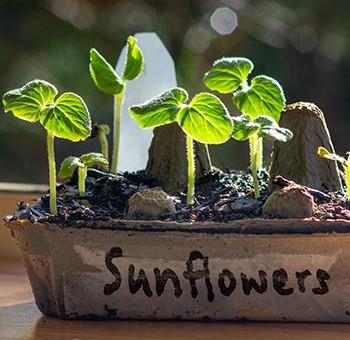
When growing them in a pot, choose a large one about 10 to 12 inches in diameter.
Line the drainage hole with pebbles to maintain proper drainage.
Growing Sunflower From Cuttings
The healthy sunflower stem may also start new plant growth. Choose a mature sunflower about four to six inches tall and make a 45-degree cut on its base. Plant the cutting in a mixture of compost and soil and water the pot thoroughly.
Keep the pot under the shade for a few days before transferring it to full sun.
⇒ Stopped Spending Money At The Pharmacy By Growing These 10 Plants (Video)
Plant Care and Maintenance
Sunflowers are easy to grow and can tolerate any climate. They are particularly hardy in USDA zones 2 to 11.
If you aim for lustrous blooms, the basic requirements are: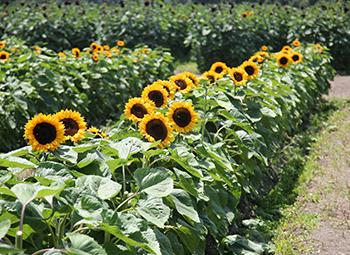
- Well-draining and rich soil
- Alkaline to neutral soil
- Five to eight hours of sunlight
- Regular watering
- NPK fertilizer every ten days (half tbsp of 19:19:19 to a liter of water) or nitrogen-rich fertilizer for full-grown plants
- Temperature above 60⁰F
- Deadhead the droopy flowers
How To Harvest Sunflower
Sunflowers are harvested either for cut flowers or their edible seeds.
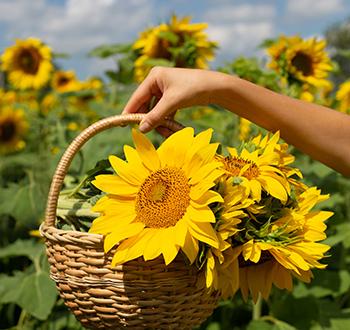 The flowers of this plant are harvested once the first petal starts to unfurl. Cut the stem off the base and strip off three-fourths of its leaves. The flowers picked when they are about to bloom can last for up to twelve days without adding preservatives.
The flowers of this plant are harvested once the first petal starts to unfurl. Cut the stem off the base and strip off three-fourths of its leaves. The flowers picked when they are about to bloom can last for up to twelve days without adding preservatives.
Harvest the seeds when the stalks are brown, and the flower faces downward and is heavy with the seeds.
You may wait for the seeds to fall off while protecting the flower head with netting to keep the critters away. Or, cut the flower heads, hang them to dry, and harvest the seeds for later. Even if the seeds are not yet ready, you can still dry the plants for a few more days before de-seeding them.
Harvest the seeds by rubbing the flower heads to loosen them. Rinse the seeds to remove all the debris, dry them, and store them in containers for future use.
What Sunflower Is Good For And Natural Remedies Made From It
Sunflower is a valuable crop with an array of uses in medicine, beauty products, and culinary use. It is nutrient-dense with many healing properties such that sunflower is considered one of the superfoods.
Among its many medicinal benefits, sunflower is popular for its effectiveness against cardiovascular diseases. The seeds are rich in vitamin E which lowers the risk of heart attack, and protect the cells from damaging free radicals. Vitamin E is also essential in blood clotting to speed up the healing process of external wounds.
Sunflower is rich in lecithin, which aids in lowering cholesterol levels. It boosts the HDL, or good cholesterol, to ward off other potential health risks.
The lecithin in sunflowers is also an effective nutrient for relieving many digestive conditions. It increases the mucus in the gut by forming a protective layer against harmful bacteria. Of the many sources of lecithin, sunflower seeds are the safest since they are natural and not modified.
When it comes to skin health, sunflowers are also a valuable plant. It aids in tissue regeneration to nourish the skin and delays the external signs of aging. It contains beta-carotene that protects the skin from environmental damage. The sunflower seeds are rich in copper to help the body produce melanin that protects the skin from harmful UV rays.
Sunflower is also beneficial for promoting brain health given its high level of vitamins and minerals. It contains tryptophan, an amino acid that produces serotonin to boost the signals in the neuron. It also has choline for improving memory and its functions.
⇒ 40 Interesting Home Reliefs from Our Grandparents That Could Help You (Video)
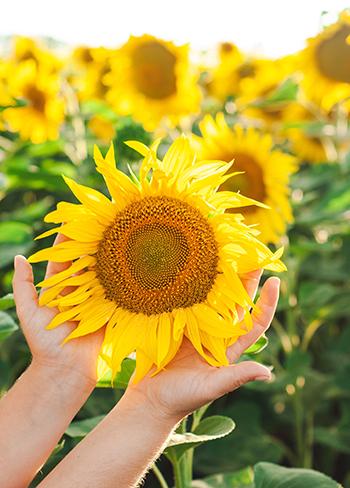
Some hair growth products also utilize sunflower because of its ability to improve circulation and stimulate hair growth.
Generally, sunflower is valued for improving the following health issues:
- Cholesterol
- Digestive issues
- Skin problems
- Respiratory issues
- Diabetes
- Hair loss
- Cardiovascular problems
- Non-alcoholic fatty liver disease
- Boosting brain function
- Aid in breastfeeding
- Cell damage prevention
- Supporting brain health
What Parts Of The Sunflower Are Used For Remedies?
The seeds of the sunflower are the most commonly consumed part of the plant. However, almost all of its plant parts may also be used as an herbal remedy.
The bark and flower can be used to produce a tincture. The petals of the sunflower are also made into infusions or tea.
The crushed leaves are useful for making a poultice.
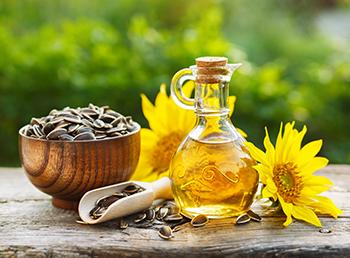
Sunflower roots can be made into a decoction and used as a warm wash. Traditionally, the dried sunflower roots are chewed and applied to rattlesnake bites.
As an herbal remedy and supplement, sunflower is available as a liquid extract, oil, or capsule.
Sunflower oil has the following adult dosage for specific conditions:
Heart disease: 20 mg per day in place of other fats and oils
High cholesterol: 45-50 mg per day for 12 weeks
Topically, sunflower oil can be applied twice daily for six weeks for athlete’s foot.
Sunflower lecithin powder is taken 1 to 1.5 tbsp daily. Sunflower capsule’s daily dose is 2400 mg per day, taken in several split doses with meals.
Dosages are according to manufacturers, but they can vary on age, body and health condition, and specific health concerns. So, always check with your doctor before using sunflower herbal supplements.
Hair Conditioning Sunflower Petal Vinegar Rinse
Ingredients
- 2 cups apple cider vinegar
- 1 cup sunflower petals (loosely heaped)
Steps
- Coarsely chopped the sunflower petals.

- Combine the vinegar and sunflower petals in a jar.

- Cover the jar with a non-reactive lid. If using a metal lid, place a plastic or parchment paper on top of the jar before covering. This will help protect the lid from the vinegar’s acidity and prevent rusting.

- Keep it in a cool and dark place for two weeks before straining.

How to use this remedy
Dilute ¼ to ½ cup of the infusion with 1 cup of water and use as a hair conditioner after shampooing. Lightly rinse with cool to lukewarm water.
This vinegar rinse is excellent for treating flaky scalp and overall conditioning of hair. But limit the use to only once a week to restore the hair’s pH balance without damaging it with vinegar.
What Plants Resemble Sunflower
| Features | Sunflower (Helianthus annuus) | Black-eyed Susan (Rudbeckia hirta) | False Sunflower (Heliopsis helianthoides) |
|---|---|---|---|
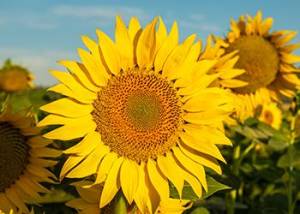 | 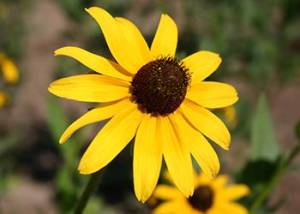 | 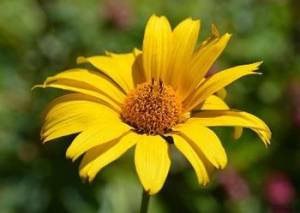 |
|
| Size | Up to 10 ft | 4 ft | 6 ft |
| Leaves | Green; rough; hairy; lance-shaped; alternate to opposite | Green; rough; simple; hairy; alternate; lanced to ovate | Green; rough; simple; opposite; lanced to ovate; serrated |
| Flowers | Bright yellow; disk with ray florets; radial symmetry; heliotropic; 6-inches | Gold/orange; brown egg-shaped center; ray florets; radial; 3-inches | Gold/yellow; sunflower-like; brownish-yellow cone center; 1 to 3 inches |
| Fruits/Seeds | Achene; numerous seeds; ovoid to flattened seeds; dark gray with white stripes | Brown capsule; small, brown seeds | Achene; numerous black seeds |
| Stem | Erect; sturdy; fleshy; coarse; hairy; branched or unbranched | Green; hairy; rough; erect; limited branching | Upright; branched; green to reddish; rough |
| Scent | Subtle vegetal to resinous smell | Mild anise-like scent | No scent |
Warnings And Cautions
Sunflowers are likely safe when seeds or oil are taken orally in an appropriate amount. It is also safe when applied topically, but it may trigger an allergy in people with sensitivity to Asteraceae or ragweed.
There are no sufficient studies to prove the effectiveness of sunflower supplements in pregnant and breastfeeding women. Sunflower seeds are safe in food amounts, but taking other forms of herbal remedies should be avoided without a doctor’s prescription.
Sunflower oil may interact with medications for diabetes and is not recommended for patients taking diabetic prescription medicines.
Make sure to consult with a qualified health professional when using any form of herbal remedy.
You may also like:
Natural Skin Care Tips for The Summer!
Similar to Morphine: The Best Natural Painkiller that Grows in Your Backyard (Video)
The Plant Doctors Are Begging People To Grow

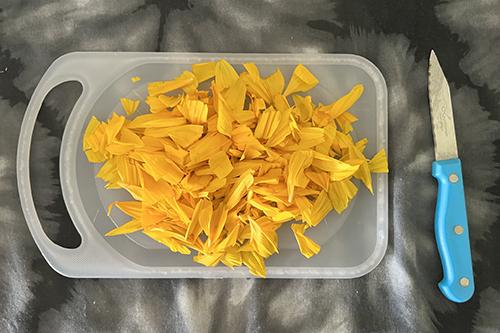
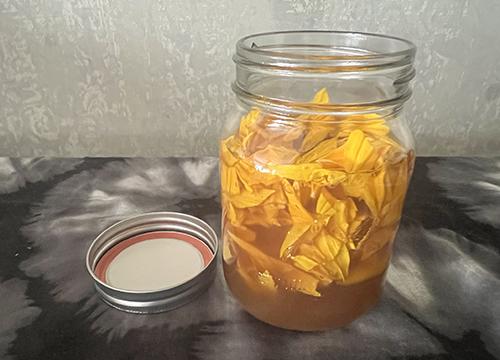
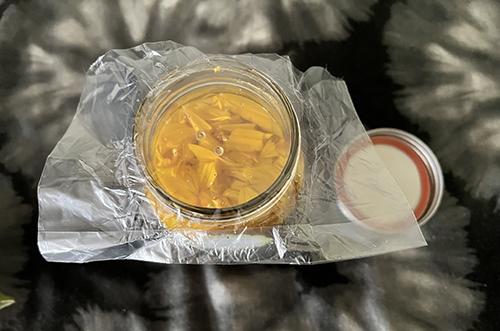
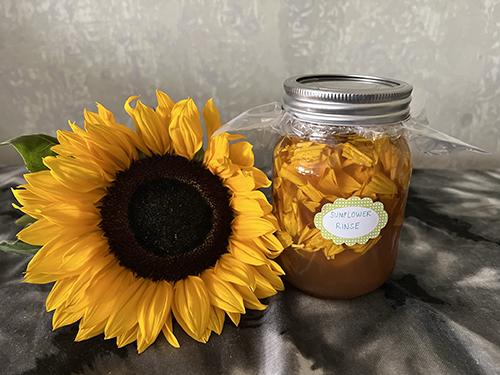
It’s my understanding that the yellow “sun rays” are false petals. The real petals are the tiny flowers that form over individual seeds. Should we use the real petals for the hair conditioner?
The yellow ray petals are what’s used in the pictures.